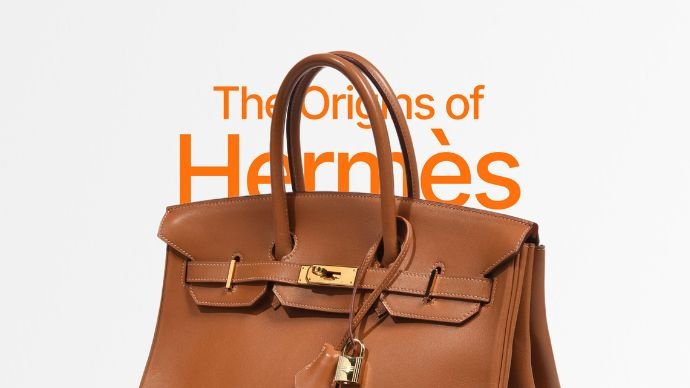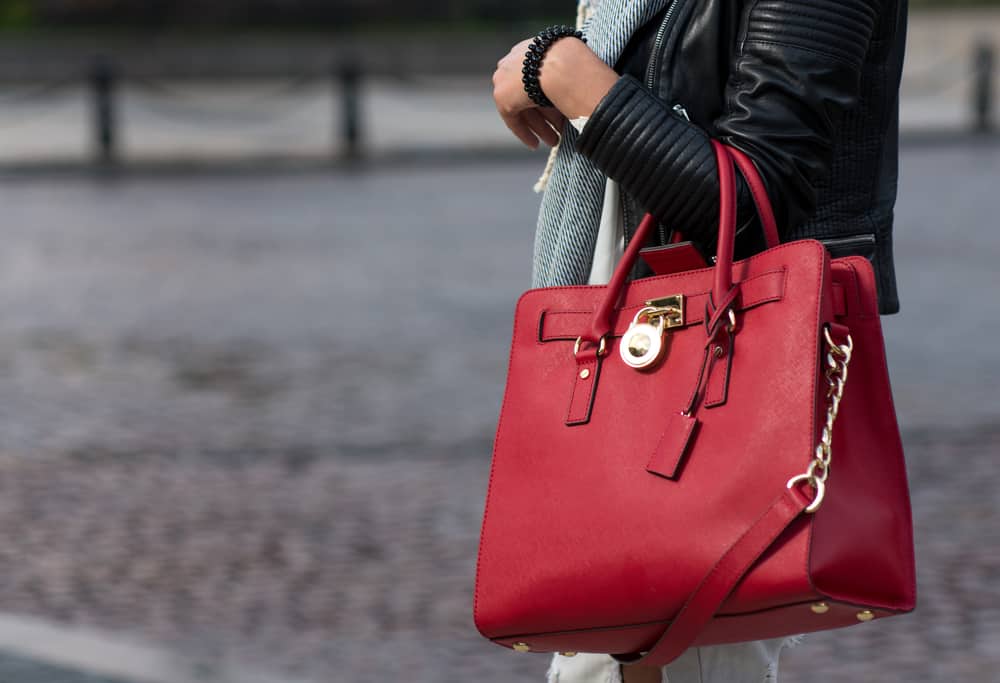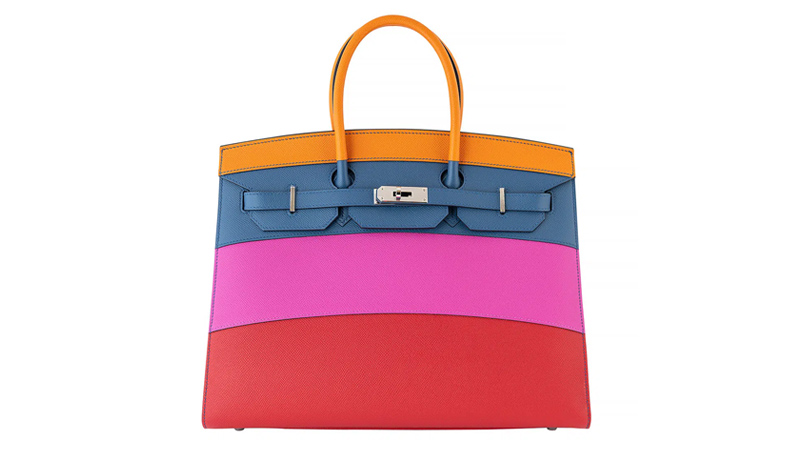Hermès Birkin bags are expensive due to their meticulous single-artisan craftsmanship, use of rare materials, intentional scarcity, and status as a Veblen good.

The allure of the Hermès Birkin is a complex tapestry woven from history, unparalleled artistry, and calculated economics. Understanding the factors that contribute to its five and six-figure price tag reveals a masterclass in luxury branding. Here is a breakdown of the secrets behind the Birkin’s cost.

Table of Contents
- What Defines the Legendary Status of a Birkin Bag?
- How Does Meticulous Craftsmanship Justify the Cost?
- What Role Do Exquisite Materials Play in the Price?
- Why Is Scarcity Hermès’ Most Powerful Marketing Tool?
- Is a Birkin Bag a Tangible Financial Asset?
- The Psychology of Ultimate Luxury: Beyond the Bag Itself
- What Is the True Price of Owning a Birkin?
What Defines the Legendary Status of a Birkin Bag?
The story behind the Birkin is as iconic as the bag itself. It began not in a design studio but 35,000 feet in the air. In 1984, British actress and singer Jane Birkin was seated next to Jean-Louis Dumas, the executive chairman of Hermès, on a flight from Paris to London. When the contents of her straw bag spilled, she lamented her inability to find a suitable leather weekend bag.

Dumas, ever the innovator, was inspired. He and Birkin spent the flight sketching ideas on the back of an airsickness bag. The result was a design for a spacious, sophisticated, yet practical handbag with a secure closing mechanism. Named in her honor, the Birkin bag was born. It was more than just a new product; it was a solution-driven piece of art that perfectly encapsulated the needs of the modern, stylish woman.
From this serendipitous encounter, the Birkin evolved from a functional luxury item into a global phenomenon. It transcended its purpose to become the ultimate symbol of wealth, status, and exclusivity. Its presence in pop culture, from television shows to the arms of countless celebrities, cemented its position as the world’s most desirable handbag.
How Does Meticulous Craftsmanship Justify the Cost?
The core of the Birkin’s value lies in the unparalleled human touch involved in its creation. Unlike mass-produced luxury goods, each Birkin bag is constructed from start to finish by a single, highly trained artisan in a French workshop. This philosophy ensures absolute consistency and a level of quality that machinery cannot replicate.
An artisan must train for years before they are even permitted to work on a Birkin. The entire process, from cutting the leather to the final polish, can take between 18 to 40 hours of dedicated labor. This intense focus means that each bag is not merely an accessory but a unique piece of art, bearing the subtle signature of its creator.
The stitching on a Birkin is a hallmark of its quality. Hermès artisans use a traditional, centuries-old technique known as the saddle stitch. This method involves using two separate needles to pass thread through the same hole in opposite directions, creating a durable and visually distinct seam that is far stronger than any lockstitch produced by a machine. It is a painstaking process that represents a commitment to enduring quality.
What Role Do Exquisite Materials Play in the Price?
Hermès sources only the finest and most flawless materials from around the globe. The leathers used for Birkin bags, such as Togo, Epsom, and Clemence, are known for their durability, texture, and ability to hold the bag’s iconic shape. These hides are sourced from exclusive tanneries and undergo a rigorous selection process where even the slightest imperfection results in rejection.
Beyond standard leathers, the price escalates dramatically with the use of exotic skins. Ostrich, lizard, and alligator are coveted for their unique patterns and rarity. At the absolute pinnacle of luxury is the Himalayan Niloticus Crocodile Birkin, renowned for its delicate white and grey gradation that evokes the snow-capped mountains. This material is incredibly difficult to source and dye, making it one of the rarest and most expensive bags in the world.
The hardware—the lock, keys, and studs—is not an afterthought. It is typically plated with precious metals like palladium or gold. For exceptionally rare editions, the hardware can be adorned with diamonds, further elevating the bag into the realm of high jewelry. Every metallic component is crafted to the same exacting standards as the rest of the bag, ensuring it functions perfectly and resists tarnish for decades.
| Component | Factor Driving Cost | Impact on Price |
|---|---|---|
| Labor | Single artisan, 18-40 hours of manual saddle stitching. | High |
| Standard Leather | Flawless, top-grade hides (e.g., Togo, Epsom). | Significant |
| Exotic Skins | Rarity and difficulty in processing (e.g., Crocodile, Ostrich). | Very High / Exponential |
| Hardware | Precious metal plating (Gold, Palladium) or diamond setting. | Moderate to Extreme |
Why Is Scarcity Hermès’ Most Powerful Marketing Tool?
One of the biggest misconceptions about acquiring a Birkin is the idea of a “waitlist.” This list effectively does not exist. Hermès employs a strategy of intentional scarcity to maintain the bag’s exclusivity and desirability. You cannot simply walk into a store and buy a Birkin; you must be offered one.
This “offer system” is a carefully managed process. To be considered, a client typically needs to build a significant purchase history with the brand, buying other items like scarves, shoes, and ready-to-wear fashion. This demonstrates loyalty and establishes a relationship with a sales associate. The associate then has the discretion to offer a Birkin to a valued customer when one becomes available, often without the client being able to choose the specific size, color, or material.
By producing far fewer bags than the market demands, Hermès creates an environment of intense desire. This controlled supply ensures that the value of each bag remains high and that ownership is perceived as a rare privilege. The difficulty of acquisition is a key part of the bag’s marketing and a primary driver of its astronomical price on the secondary market.
Is a Birkin Bag a Tangible Financial Asset?
Remarkably, the Hermès Birkin has evolved from a luxury purchase into a recognized investment class. Over the years, studies have shown that the value of Birkin bags on the resale market has appreciated at a rate that sometimes outperforms traditional assets like stocks or gold. It is one of the few consumer goods that can often be resold for significantly more than its original retail price.
The resale market for Birkins is robust and highly sophisticated, with auction houses and luxury resellers catering to a global clientele. The value of a pre-owned Birkin is determined by a combination of factors, including its condition, material, hardware, color, and size. Rare or discontinued colors and limited-edition models can command extraordinary prices, sometimes fetching hundreds of thousands of dollars at auction.
This investment potential adds another layer to its high cost. Buyers are not just purchasing a handbag; they are acquiring an asset that is likely to hold or increase its value over time. This financial aspect helps rationalize the initial expense and further fuels the demand from both fashion enthusiasts and serious investors.
The Psychology of Ultimate Luxury: Beyond the Bag Itself
The Birkin bag is a textbook example of a Veblen good—a luxury item for which demand increases as the price increases. The high price tag is not a deterrent; it is a central part of the appeal. Owning a Birkin is a public declaration of immense wealth and success. It is an immediate signifier that its owner belongs to an exclusive club.
The constant visibility of the bag in the hands of celebrities and global influencers reinforces its status as the ultimate accessory. When tastemakers and icons are photographed with a Birkin, it creates a powerful aspirational effect, driving desire among a wider audience who see it as a pinnacle of achievement. This cultural cachet is intangible but adds immeasurable value to the brand.
While the Birkin represents the apex of this phenomenon, the underlying appreciation for masterful leatherwork is universal. It’s a principle that inspires brands like BeldTura Leather, which focus on bringing the essence of handcrafted quality and premium full-grain leather to a wider audience. This celebrates the artisan’s skill and the beauty of durable materials, offering timeless style rooted in the same traditions of quality that make luxury items so coveted.
What Is the True Price of Owning a Birkin?
It is important to distinguish between the price of a Birkin at an Hermès boutique and its price on the resale market. The retail price for a standard leather Birkin typically starts around $10,000, but these are nearly impossible to acquire directly. Due to the scarcity model, most buyers turn to the secondary market, where the same bag can sell for two to three times its retail value or more, depending on its specifications.
Furthermore, the cost of ownership does not end with the purchase. To protect such a valuable asset, owners often opt for specialized insurance. Additionally, Hermès offers a “spa” service for its bags, where they can be sent for reconditioning, cleaning, and repairs. While this service maintains the bag’s pristine condition and value, it represents an additional ongoing expense, solidifying the Birkin’s status as a long-term luxury commitment.



